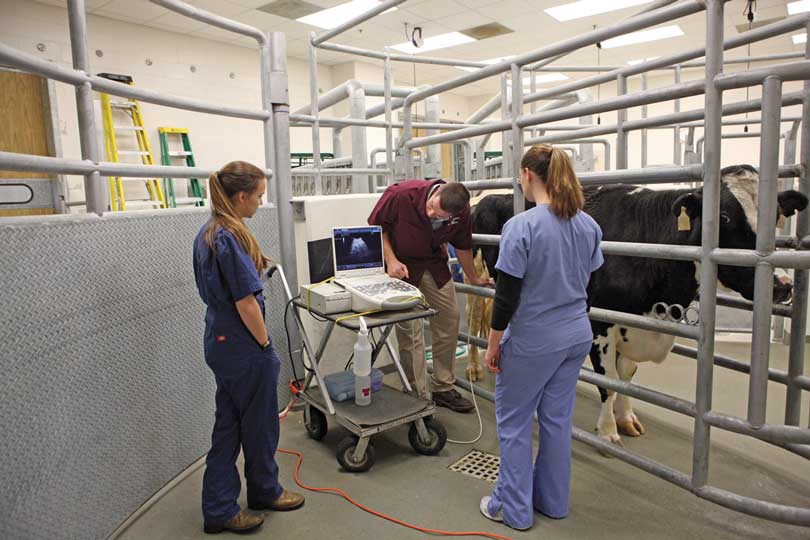By Jessica Domel
Multimedia Reporter
In a little over a year, the culmination of the Texas A&M University’s $90 million investment in the future of large animal health in the Texas Panhandle is expected to officially open its doors.
The university system broke ground on a building for its Veterinary Education, Research and Outreach (VERO) program and a new home for the Texas A&M Veterinary Medical Diagnostic Laboratory (TVMDL) on the West Texas A&M University Campus in Canyon in December 2018.
TVMDL is expected to be an 11,233-square-foot facility with the latest technology to provide the best diagnostic capabilities.
When completed, VERO will be a 22,000-square-foot-plus regional veterinary teaching center that will facilitate collaborative, multi-disciplinary research.
At the groundbreaking for the two buildings, Dr. Eleanor Green, the Carl B. King Dean of Veterinary Medicine, said VERO is the culmination of an idea that began 10 years ago to encourage youth to return to rural communities, support livestock industries and the veterinarians who serve them and catalyze economic growth in the Texas Panhandle.
“Our program here at West Texas A&M and the partnership with them is an extension of the campus from Texas A&M University College of Veterinary Medicine and Biomedical Sciences,” Dr. Dan Posey, VERO academic coordinator, said in an interview with the Texas Farm Bureau Radio Network.
The program, which has been in the Panhandle since 2016, recruits students from all over who are interested in the veterinary field.
“The opportunities in rural communities are tremendous. Students that are coming from rural communities will go back to serve those communities,” Posey said. “We know there’s a 60 percent chance of returning back to within a hundred miles of where you grew up.”
Training more veterinarians is of growing importance, Posey said, because there is shortage in rural areas.
“Our focus isn’t really just on large animal, but it’s on rural practice and that’s where the majority of food animal is done in the state of Texas,” Posey said. “I was a good example of that in Madisonville. My practice was 50 percent large and 50 percent small. To serve a rural community, you really have to be able to serve all species, and you’ve got to be good at it.”
The university system’s program has changed to ensure a more practice-ready veterinarian to meet the needs of urban and rural Texas.
“When you go through a class, you’re not just tested for anatomy and physiology. They actually have clinical skills that are being taught in the first year, and they’re checked out on every one of those clinical skills by a clinician to make sure they have accomplished that. That’s why it’s a competency-based curriculum,” Posey said.
Since there’s a large amount of livestock in the Panhandle, the plan is for the VERO program to start training students in Canyon.
“We’ve already trained students out here for two-and-a-half years, but the four-year curriculum at College Station–actually a portion of it–will move out here to West Texas A&M and the Veterinary Education Research and Outreach Center,” Posey said. “What we’re going to do is rotations out here to train them in rural practice, in food animal practice, some equine large animal practices, dairy and also cow-calf.”
Students who are in the program in Canyon have trained in feedyards, dairies and with rural veterinarians.
“This program is building a food animal veterinarian who will go to a rural practice, not just exclusively food animal, because there’s not many of those jobs in Texas,” Posey said. “It’s actually the rural practitioners that we’re trying to build in this program, because that’s what takes care of the beef cattle and the beef industry in Texas.”
The VERO building and TVMDL are expected to open in August 2020.

